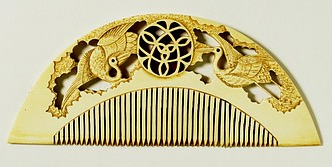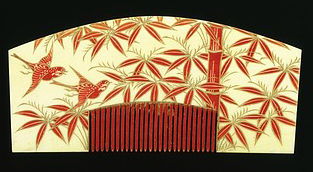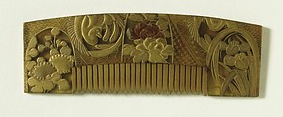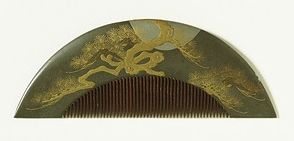All the artists who made these combs, c. 1800, are unknown. The first is carved and incised ivory with openwork, showing two cranes pointing at a family crest, which in Japanese is called KA-MON. KA means families with their own genealogical trees, and MON means crest.

The second comb is made of tortoiseshell, graced with cream and red lacquer. The artist painted two plover birds flying to a rest spot on a bamboo tree branch. The two points of interest are on the sides of the comb: the left edge shows the birds, while just to the right side, lined up with the tines, a red bamboo trunk waits for the birds to land on its branches.

Third, is a square tortoiseshell comb with several floral gold maki-e designs.

Last but not least, is a grey half-moon-shaped comb showing a mother-of-pearl half moon shining amid a sky of gold stars and chimeras.

All four combs reside in the Victoria and Albert Museum in London.
